As we know it, dyslexia is the difficulty of reading and interpreting letters and written content. Because of this, dyslexics find it hard to read even computer fonts. The good thing is, there are now fonts specifically made for the dyslexic eye.
What are the fonts for dyslexia?
It’s not the Times New Roman and Calibri types of font. Here are the fonts commonly used for easier reading to the dyslexic[1]:
Dyslexie
Opendyslexic
Gill Dyslexic
Read Regular
Lexia Readable
Sylexiad
DYSLEXIE[2]:
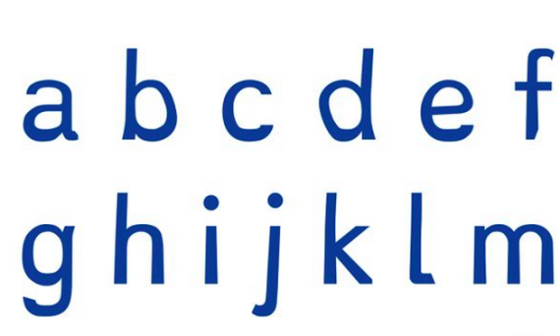
Image courtesy of theguardian.com
This font is developed by Christian Boer, a Dutch designer, in 2008 at the Utrecht Academy of Art. This font is exaggerately slanted and deformed to avoid confusion of reading similar letters like p, b, and d like in.this picture below.

Image courtesy of theguardian.com/Christian Boer
According to Boer, who is dyslexic himself, “Traditional typefaces make this worse, because they base some letter designs on others, inadvertently creating ‘twin letters’ for people with dyslexia.”[2]
This is a quote from theguardian.com about the characteristics of Dyslexie: To counteract this tendency, Boer has introduced a number of tweaks. First, the letters are weighted towards the bottom, as if the bulk of each character’s body has slumped downwards under accelerated gravitational pressure. This sets a heavy baseline, which makes it harder for the letters to be flipped upside down – and gives the font the look of a chubby-ankled cousin of Comic Sans.[2]
Another characteristic of Dyslexie goes like this: Tails are lengthened and the space between letters is increased to counteract the common crowding effect, while capital letters and punctuation are bolded, making it easier to spot where one sentence ends and a new one begins.[2]
Studies done by the University of Amsterdam and the University of Twente in 2011showed that 84% of readers could read using Dyslexie font faster than most fonts and 77% committed fewer mistakes.[2]
OPENDYSLEXIC[3]:

Image courtesy of bbc.com/Abelardo Gonzalez
OpenDyslexic is a free-to-use font designed by New Hampshire-based mobile app designer Abelardo Gonzalez in 2011.[3] This font is designed to give “gravity” to letters to prevent the characters rotating in readers’ minds.[3]
OpenDyslexic goes like this. The letters are designed with the lower part having heavier depth for easier reading to the dyslexic.
The good thing is this font has gained popularity to the public. This font has already been introduced to the iOS app store, Android market, Instapaper, and even Gonzalez was contacted by The Kildonan School – which specialises in teaching children with dyslexia – to tell him it had started testing the font with its pupils.[3]
“The response has been great: I’ve had people emailing saying this is the first time they could read text without it looking wiggly or has helped other symptoms of dyslexia,”[3] said Gonzalez.
The font has been taken into consideration by Sony and Amazon for their e-readers.[3]
However, OpenDyslexic has yet to undergo scientific study just like Dyslexie.
GILL DYSLEXIC[1]:

(C) Christian Boer. All rights reserved. Image courtesy of dyslexia-reading-well.com
Nothing is known why Christian Boer, the creator of Dyslexie, created another font for dyslexia. Maybe he just wanted a cheaper type of Dyslexie, which is the Gill Dyslexic.[1] This is created to compete with the OpenDyslexic. Gill Dyslexic aims to reduce the symmetry between letters, making them easier to distinguish.[1] Like Dyslexie, Gill Dyslexic has heavier depth in the bottom to avoid mirroring of similar letters.
READ REGULAR[4][5]:

Image courtesy of dyslexia-reading-well.com
Read Regular is created by Natascha Frensch, a graphic designer at the Royal College of Art, in 2003.[5] This font is designed with an individual approach for each of the individual characters, creating difference in the actual characters of b & d itself (not mirroring the b to make the d), to create a large character differentiation.[4]
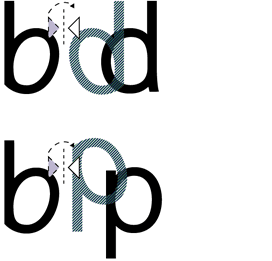
Image courtesy of readregular.com
The differentiated loops of similar letters to avoid mirroring
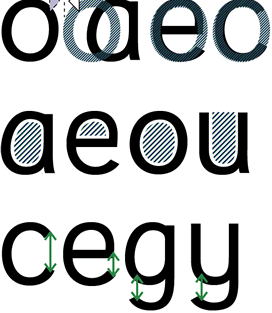
Image courtesy of readregular.com
Another set of similar letters with differentiated curves
LEXIA READABLE[6]:
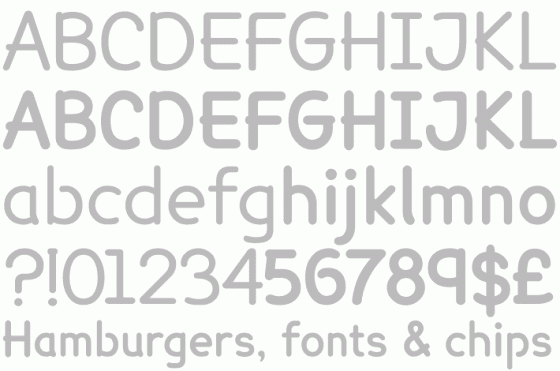
Image courtesy of k-type.com
Lexia Readable is the adult version of Comic Sans. designed with accessibility and legibility in mind, an attempt to capture the strength and clarity of Comic Sans without the comic book associations. Features like the non-symmetrical b and d, and the handwritten forms of a and g may help dyslexic readers.[6]
SYLEXIAD[7]:

Image courtesy of robsfonts.com
Sylexiad is a font developed by Norwich University College of Arts senior professor Dr. Robert Hillier. This font involved the design and testing of a new font family developed and informed from a dyslexic perspective against other fonts recommended by dyslexia organisations. For the majority of those adult dyslexic readers tested, the evidence indicated a clear preference for the Sylexiad fonts.[7]
That’s some of the dyslexia-costumized fonts.
Are there common fonts that can be read by dyslexics?
Yes. Some fonts, especially simple ones, can be easily read by dyslexics given white papaer and bright light. They include the following:
Helvetica
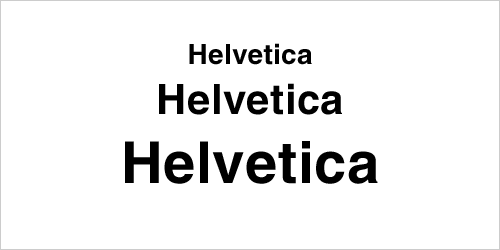
Image of justcreative.com
Courier

Image courtesy of wikipedia.org
Arial
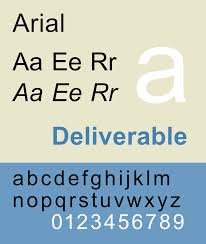
Image courtesy of wikipedia.org
Verdana

Image courtesy of speckyboy.com
In fact, a 2013 Spanish study[8][9] was done to see what fonts are good for the dyslexic reader. Some common fonts like the fonts above are found to be easier read than some dyslexia-costumized fonts.
Other fonts that can be easily read by dyslexics are[5]:
Myriad Pro

Image courtesy of dyslexic.com
Trebuchet MS

Image courtesy of dyslexic.com
Comic Sans (the mother of Lexia Readable)

Image courtesy of dyslexic.com
Geneva

Image courtesy of dyslexic.com
Century Gothic

Image courtesy of fontsplace.com
Sassoon

Image courtesy of jollylearning.co.uk
Calibri

Image courtesy of microsoft.com
FS Me Web

Image courtesy of dyslexic.com
Thankfully, technology and the arts are very accommodating and creative in helping dyslexics read font.
Sources:
1. http://www.dyslexia-reading-well.com/dyslexia-font.html
2. http://www.theguardian.com/artanddesign/architecture-design-blog/2014/nov/12/dyslexie-new-font-that-makes-reading-easier-with-dyslexia
3. http://www.bbc.com/news/technology-19734341
4. http://www.readregular.com/english/background.html
5. http://www.dyslexic.com/fonts
6. http://www.k-type.com/fonts/lexia-readable/
7. http://www.robsfonts.com/sylexhome.html
8. Rello, Luz & Ricardo Baeza-Yates. 2013. Good Fonts for Dyslexia. (pdf) ASSETS 2013: The 15th International ACM SIGACCESS Conference of Computers and Accessibility, Bellevue, Washington USA, 22-24 October.
9. http://www.luzrello.com/Publications.html
Posted from WordPress for Android




You must be logged in to post a comment.